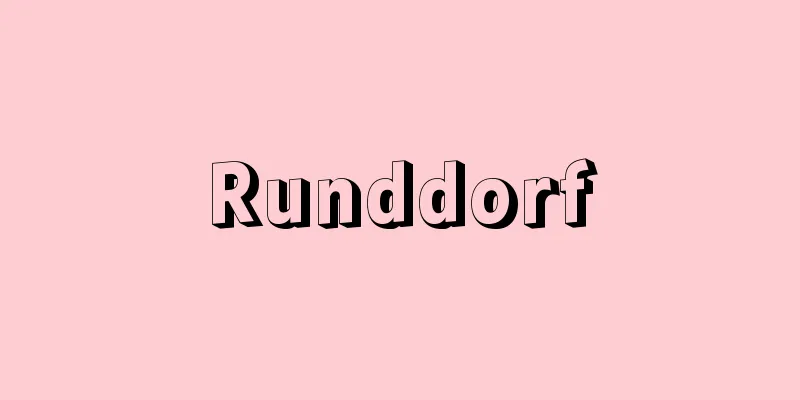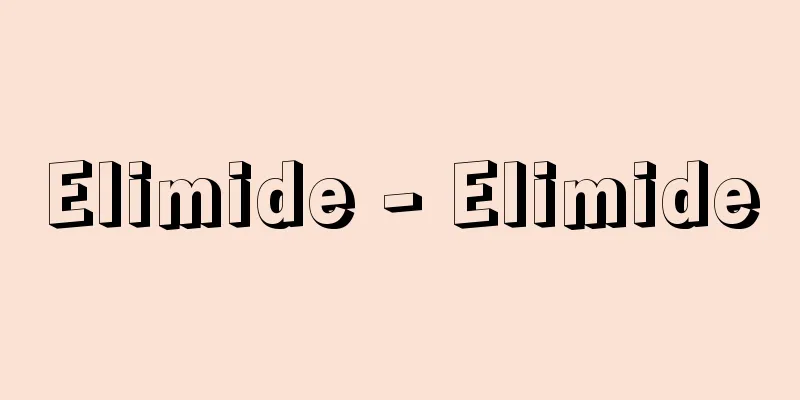Runddorf

|
…(4) Waldhufendorf: A type of village seen in late medieval forest clearings in southeastern Germany. Houses are lined up along a road at the bottom of a valley, with a long, narrow strip of cultivated land at right angles to the road behind them. (5) Runddorf: A type of village seen east of the Elbe River, with an oval square surrounded by the houses of farming peasants, thought to be a Slavic settlement. Meitzen's hypotheses that (1) the form of a settlement is inherited from the time of its establishment, and (2) that ethnic groups have a fixed settlement form have been revised through subsequent historical investigations and detailed research into the distribution areas, but the classification of settlement forms is largely based on Meitzen's. … From [Village] ...One type is the "Haufendorf," a cluster of roughly 30 peasant houses, each with its own vegetable garden, clustered together in the center of the village, surrounded by hedges or fences, with several common cultivated areas outside of that, and common land such as forests, pastures, and wasteland.The second is a "small village," a loose group of around 10 houses, with common common land and cultivated areas, but with individual cultivated land scattered irregularly, a form known as a "Weiler" in Germanic regions and a "hamlet" in England.The third type is the "Einzeldorf," a scattered village in which each house has its own vegetable garden, blocks of cultivated land of various sizes, or pastures around the house, and the houses are scattered, with very loose group regulations. In addition to these, there are other types such as the ``town/village Strassendorf'', which is a type of village where houses, vegetable gardens, cultivated land, and pastures are arranged in a regular pattern along roads through reclamation and land reclamation, and the ``round village Rundling/Runddorf'' found in areas inhabited by Slavic peoples, but the three mentioned above can be considered to be the main settlement types in Western Europe. *Some of the terminology that mentions "Runddorf" is listed below. Source | Heibonsha World Encyclopedia 2nd Edition | Information |
|
…(4)林地村Waldhufendorf 東南ドイツにおける中世末の森林開墾地にみられる形態で,谷底の道に沿って家屋が並び,その背後に道と直角に細長い耕地をもっている。(5)環村Runddorf エルベ川以東にみられ,楕円形の広場をもち,耕作農民の家屋がそれを囲む形態で,スラブ人の集落と考えられた。マイツェンの仮説である(1)集落の形態は成立当初のものを継承する,(2)民族は定まった集落形態をもつ,という点は,以後の歴史的考証,分布地域に関する精緻な研究によって修正されてきてはいるが,形態分類については,ほぼこのマイツェンの分類が踏襲されている。… 【村】より…すなわちその一つは,ほぼ30戸前後の農民家屋敷がおのおの自家の菜園地を伴いながら,〈むら〉の中心部に核をなして密集し,その周囲を垣根や柵で取り囲み,その外側にいくつかの共同耕区がひろがり,さらにその外側に森林,牧草地,荒蕪地などの入会地をもつという,三圃農法に最も適合的な〈集村Haufendorf〉であり,第2は10戸前後のルーズなまとまりで,共同の入会地や耕区もあるが,各戸別の耕地も不規則に散在する〈小村〉,すなわちゲルマン地域で〈ワイラーWeiler〉,イギリスで〈ハムレットhamlet〉などと呼ばれる形態であり,第3のタイプは,家屋敷の周囲に各戸の菜園地やブロック状の大小さまざまな耕地,あるいは牧草地などをもち,一戸一戸が分散して,団体規制のきわめてゆるい〈散村Einzeldorf〉である。このほか,干拓や開墾により計画的に道路に沿って規則正しく各戸の家屋敷,菜園地,耕地,牧草地などをもつ〈街村Strassendorf〉,あるいはスラブ系諸族の地域にみられる〈円村Rundling,Runddorf〉などのタイプがあるが,西ヨーロッパの主要な集落形態は,上述の三つと考えてよい。 ※「Runddorf」について言及している用語解説の一部を掲載しています。 出典|株式会社平凡社世界大百科事典 第2版について | 情報 |
Recommend
Kühne, W.
… The understanding that enzymes are inseparable ...
Tonomine Sarugaku
Sarugaku Noh performed at Tanzan Shrine in Tonomin...
Attaleia
…The former name of Adalya was Attaleia, founded ...
Long silk
A type of silk fabric. High-quality silk that is ...
"Music Book Summary" - Gakusho Yorokuraku
…None of them are theoretical texts, but rather r...
Siberian Expedition - Siberian Exploration
The first scientific expedition to Siberia was und...
Uniwelshitas - Uniwelshitas
…Christianity, Islam, and Judaism were allowed to...
Alps [mountain range] - Alps
The largest mountain range in Europe, stretching f...
Ukraine - Ukuraina (English spelling) Ukraine English
A republic in eastern Europe facing the Black Sea...
Lavrentiy Pavlovich Beriya
Soviet politician. Born in Georgia. He made a nam...
Red Kite (Flying Fish) - Red Kite
...In Miyazaki Prefecture, this species is called...
Aesir - Earth God
A group of gods in Norse mythology with Odin as th...
Abeno Shrine - Abenojinja
Located in Kitabatake, Abeno-ku, Osaka City. The ...
Multi-purpose terminal - Fukugo Terminal
A terminal that combines the terminal functions of...
Ouro Prêto (English spelling)
A small city in the state of Minas Gerais in south...




![Ago [town] - Ago](/upload/images/67cad2687dcb5.webp)




![Athabasca [Lake] - Athabasca](/upload/images/67cad2ed3edce.webp)